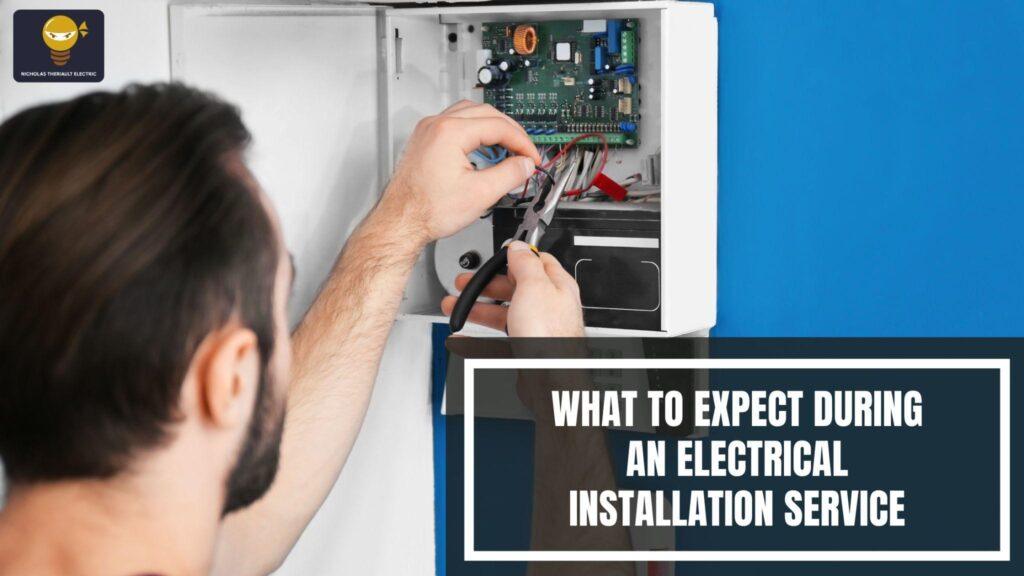What to Expect During an Electrical Installation Service—7 Must-Know Insights
Have you ever wondered what could happen if your electrical system isn’t installed properly? Faulty wiring, overloaded circuits, and outdated components don’t just lead to inconvenience—they can pose serious safety risks. Whether building a new property, renovating a space, or replacing old systems, the stakes are high. A poor installation can result in recurring issues, costly electrical repairs, or potential fire hazards. It’s not just about powering your lights and appliances—it’s about protecting your home or business for the long haul. That’s why hiring a professional for your electrical installation service isn’t optional—it’s essential. With so much riding on the outcome, knowing exactly what to expect from start to finish puts you in control.
Table of Contents
- Electrical Installation Confusion and Anxiety
- Risks of Not Knowing the Process
- Take Charge: The Clear Path to Safe and Smart Installation
- Pre-Installation Planning and Site Evaluation
- Understanding Electrical Installation Wiring
- Key Components of an Electrical Installation Service
- Safety Measures Taken During Installation
- Electrical Repairs During the Process
- Post-Installation Testing and Verification
- Ongoing Maintenance and Upgrades
- Conclusion: Take the Guesswork Out of Electrical Installation
- Frequently Asked Questions (FAQs)
Electrical Installation Service: Confusion and Anxiety
So you’ve scheduled an electrical installation service but are unsure what to expect. Is it going to take all day? Will your power be off the entire time? What if the electrician uncovers deeper issues during the job?
Homeowners and business owners often face a fog of uncertainty regarding electrical work. And rightfully so—it involves complex electrical installation wiring, potential safety risks, and critical infrastructure. Without knowing the process, you’re left in the dark (sometimes literally).
Risks of Not Knowing the Process
Here’s where things can get messy:
- Unexpected Costs: If you’re unaware of the standard process, hidden charges can surprise you.
- Delays and Miscommunication: Without clear expectations, even a simple electrical wiring installation can drag on for days.
- Safety Concerns: Mistakes or misunderstandings in electrical repairs can result in hazards, from power outages to fire risks.
- Compliance Issues: Poor installation may violate local building codes, leading to fines or failed inspections.
In other words, a lack of information can lead to poor decisions, wasted money, and a potentially unsafe environment.
Take Charge: The Clear Path to Safe and Smart Installation
This guide is here to eliminate the guesswork.
You’re about to uncover 7 must-know insights to help you understand what happens during an electrical installation service. This is your roadmap from wiring to safety checks to a stress-free, code-compliant, and efficient installation.
Let’s flip the switch on uncertainty and bring the clarity you need.
1. Pre-Installation Planning and Site Evaluation
Before wires are ever run or breakers are installed, the job begins with preparation.
Site Inspection and Safety Assessments
Licensed electricians start by walking through the property to assess the condition of existing electrical components, review blueprints, and identify hazards. This sets the stage for a safe and efficient job.
Discussing Requirements with the Electrician
Next, homeowners or project managers will sit down with the electrician to discuss needs:
- Number and type of outlets
- Appliance and lighting requirements
- Smart home integrations
- Compliance with local codes
This pre-planning step ensures the electrician’s work aligns with your goals and budget.
2. Understanding Electrical Installation Wiring
Wiring is the backbone of your electrical system. Knowing the types used helps you make informed choices.
Wiring Types and Materials
Common wiring includes:
- NM Cable (Romex): For residential walls
- Armored Cable (BX): For exposed areas
- Conduit Wiring: Often used in commercial installations
Electricians will recommend the best fit for your environment, load needs, and local building codes.
Code Compliance and Industry Standards
Your installer should always follow the National Electrical Code (NEC). Adherence ensures your wiring is safe, legal, and built to last.
3. Key Components of an Electrical Installation Service
Panels, Breakers, and Circuits
Your electrical panel is at the heart of the system. It distributes power through circuits protected by breakers that trip if there’s a fault.
Expect your installation to include:
- Main panel setup or upgrade
- Circuit labeling
- Proper load balancing
Fixtures, Switches, and Receptacles
Electricians install or upgrade:
- Light fixtures and ceiling fans
- Dimmers and smart switches
- GFCI/AFCI outlets for added safety
Every component is tested and securely fitted during the electrical installation service process.
4. Safety Measures Taken During Installation
Use of PPE and Lockout Procedures
Electricians use personal protective equipment (PPE) and lockout/tagout methods to ensure the worksite is safe for everyone. This includes:
- Insulated gloves
- Eye protection
- Locking power sources during wiring
Surge Protection and Grounding
Surge protectors help guard against voltage spikes, and grounding systems reduce shock risks and improve stability. These safeguards are essential to modern electrical systems.
5. Electrical Repairs During the Process
While installing new systems, electricians often discover issues needing immediate repair.
Common Issues Found and Fixed
- Outdated aluminum wiring
- Overloaded circuits
- Frayed or exposed cables
These are promptly addressed, ensuring the new system functions safely.
Testing for Faults and Breakdowns
Electricians use multimeters, infrared thermography, and continuity tests to spot issues before energizing the system. This proactive approach prevents costly callbacks and hazards.
6. Post-Installation Testing and Verification
Once everything is installed, rigorous testing begins.
Load Testing and Functionality Checks
Each circuit is powered and tested to ensure proper operation. Electricians simulate different loads to test capacity and resilience.
Documentation and Sign-Off
After inspections are passed, electricians provide a signed-off checklist and often a warranty for the work. This step ensures you have full transparency and confidence in your installation.
7. Ongoing Maintenance and Upgrades
Even top-notch installations need maintenance over time.
When to Schedule Maintenance
- Every 3–5 years for homes
- Annually for commercial buildings
This keeps your system running efficiently and helps detect early issues.
Adding Capacity or Smart Features
Future upgrades may include:
- Additional circuits for new appliances
- Smart lighting or automation systems
- Solar panel integration
Your existing contractor or any qualified electrical installation service provider can add these improvements.
Conclusion: Take the Guesswork Out of Electrical Installation
Electrical work shouldn’t be mysterious or stressful. Understanding what happens during an electrical service installation allows you to make informed decisions, avoid unnecessary electrical repairs, and enjoy peace of mind.
From planning to post-installation support, every step matters.
Ensure your property’s safety with expert electrical installation service. Trust NT Electrician for reliable wiring, upgrades, and repairs. Book your consultation today for peace of mind!
FAQs
1. What surprises most homeowners during an electrical service of installation?
Many homeowners are shocked by how outdated their current wiring systems are, especially in older homes. A routine installation often uncovers hidden issues like overloaded panels or ungrounded outlets that could have gone unnoticed for years.
2. Can an electrical installation wiring upgrade lower my energy bills?
Absolutely. Modern electrical installation wiring is designed for energy efficiency. Upgrading can reduce power waste, prevent voltage drops, and even support energy-saving smart devices, which can help reduce your monthly electric bill.
3. How long does it take to complete a full electrical installation service?
The answer may surprise you—it depends on more than square footage. Factors like panel upgrades, the age of the property, hidden damage, and code requirements all influence how long the service will take.
4. What are DIYers’ most common electrical mistakes, and how can professionals prevent them?
DIY electrical repairs often cause more harm than good, from using the wrong wire gauge to overloading circuits. Licensed electricians know the code, understand load balancing, and test every connection for long-term safety.
5. How do I know if I need a new electrical installation or repairs?
If your lights flicker, breakers trip often, or outlets feel warm, it’s more than a minor fix. These signs could indicate aging or unsafe wiring; only a professional can determine if a full installation is safer.




